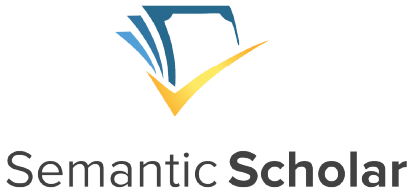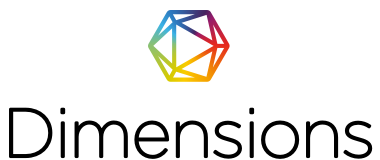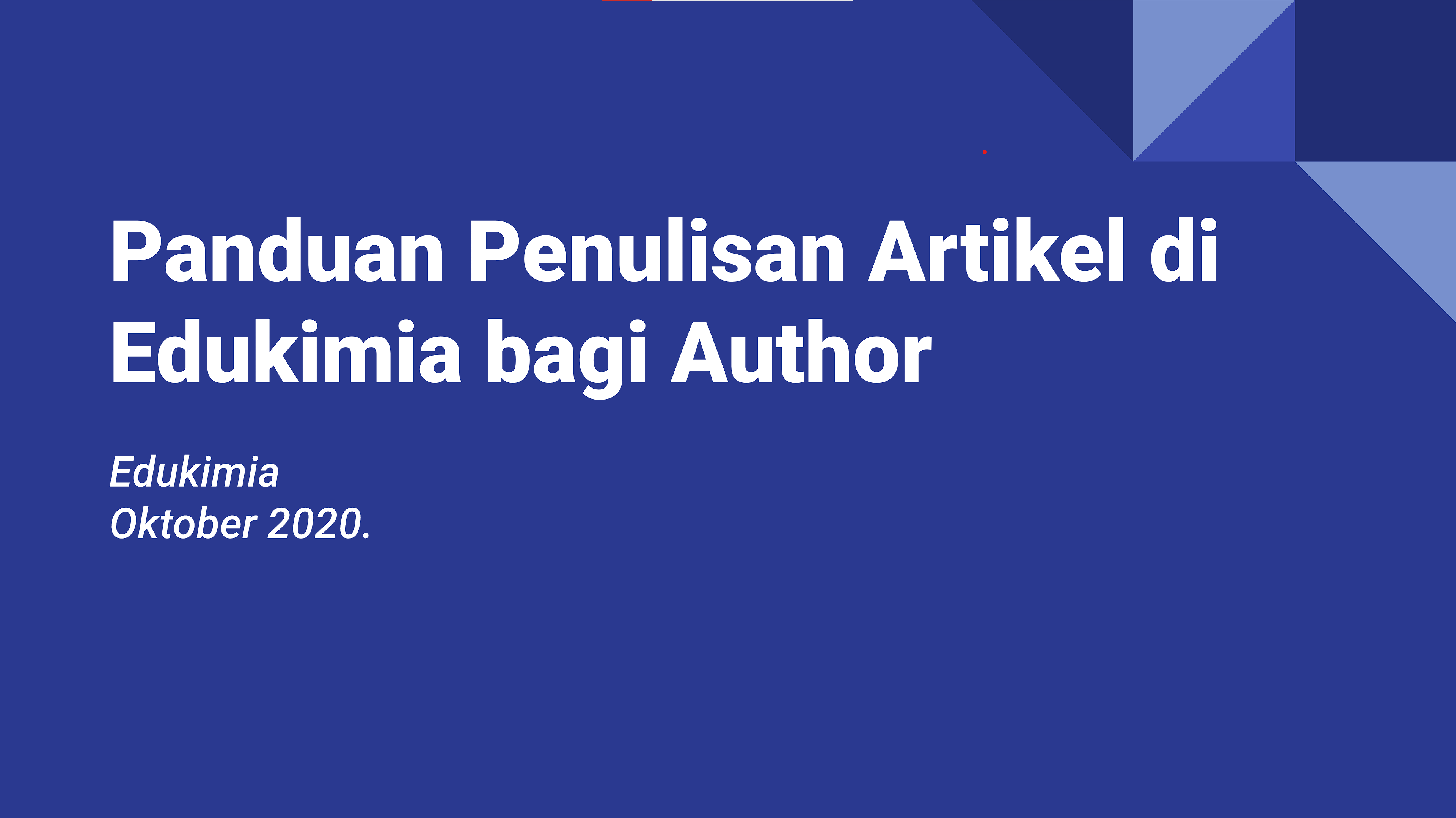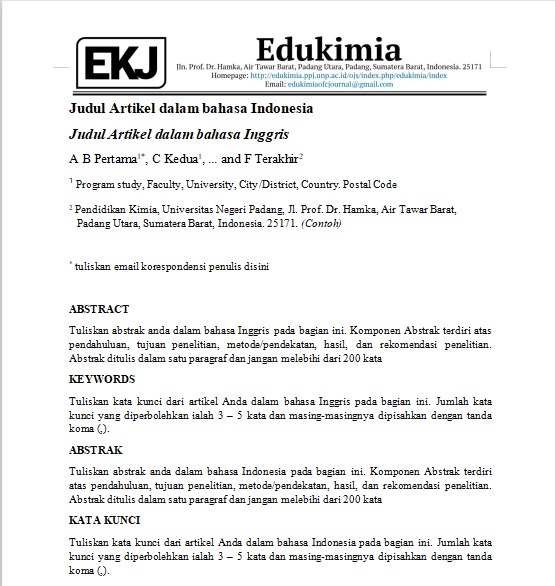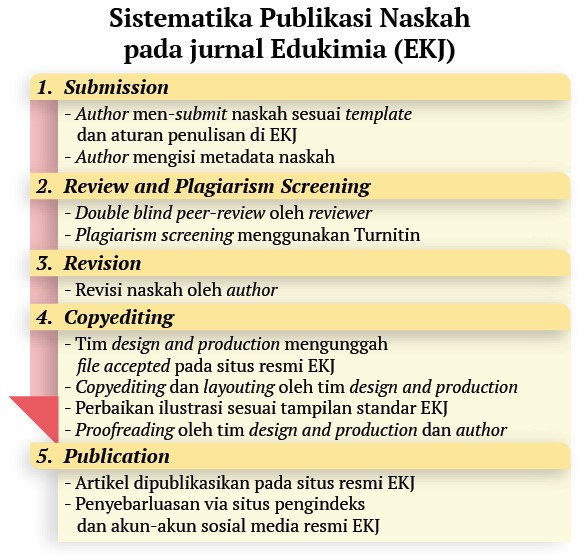Development of Chemical Literacy Assessment on Fundamental Chemical Laws and Stoichiometry
Article Metrics
The abstract has been viewed for 1510 times.The full pdf article has been downloaded for 1116 times.
Abstract
This chemistry literacy assessment instrument developed because of recent challenge toward student learning achievement evaluation so it could not only grade student’s cognitive ability in term of understanding and memorizing, but also will grade the application of students’ concept to face any problems. The availability of the chemistry literacy assessment instrument consists of various aspects, such as content, context, High Order Learning Skills (HOLS), and attitude. These aspects are expected to answer those challenges. This study aims to produce a proper and right chemistry literacy assessment toward fundamental law of chemistry and stoichiometry topic based on content validity value and questions numbers, reliability grade, difficulty level and chemistry literacy question differentiator level. This study is the development type, which is Model of Educational Reconstruction (MER) design. The clarification of a test instrument on empirical study was done toward three chemistry and education experts (lecturer and teacher). The instrument used was chemistry literacy question which consists of seven discourse question, then expanded into 15 questions. The result showed that content validity value of the designed chemistry literacy assessment could be categorized as valid.
Keywords
References
F. U. Lampung, J. Prof, and S. Brojonegoro, “Rahmayani et al. Pengembangan Instrumen Asesmen Kognitif berbasis …. |191,” pp. 191–202.
S. Rahayu, “Prosiding Seminar Nasional Kimia UNY 2017 Sinergi Penelitian dan Pembelajaran untuk Mendukung Pengembangan Literasi Kimia pada Era Global Ruang Seminar FMIPA UNY, 14 Oktober 2017,” Pros. Semin. Nas. Kim. UNY 2017, pp. 319–324, 2017.
Holbrook, J, & Rannikmae, M. 2009. The Meaning Of Scientific Literacy. International Journal of Environmental & ScienceEducation, 4(3), 275-288.
A. Sujana, “Literasi Kimia Mahasiswa PGSD dan Guru IPA Sekolah Dasar Pada Tema Udara,” Mimb. Sekol. Dasar, vol. 1, no. 1, pp. 99–107, 2014.
M. Perkasa and N. Aznam, “Pengembangan SSP Kimia Berbasis Pendidikan Berkelanjutan Untuk Meningkatkan Literasi Kimia dan Kesadaran Terhadap Lingkungan,” J. Inov. Pendidik. IPA, vol. 2, no. 1, p. 46, 2016.
OECD, “Country note – results from PISA 2015: Indonesia,” Oecd, pp. 1–8, 2016.
OECD, “What 15-year-old students in Indonesia know and can do,” Program. Int. Student Assess. Result from PISA 2018, pp. 1–10, 2018.
A. Ali, I. Ardiansyah, D. Irwandi, and D. Murniati, “Analisis Literasi Sains Siswa Kelas XI IPA Pada Materi Hukum Dasar Kimia di Jakarta Selatan,” J. Kim. dan Pendidik., vol. 1, no. 2, pp. 149–161, 2016.
Shwartz Y, Ben-Zvi R, Hofstein A. The Use of Scientific Literacy Taxonomy for Assessing The Development of Chemical Literacy Among High-School Students. Chem Educ Res Pract 2006;7(4):203–25.
E. Yusmaita and E. Nasra, “Perancangan Assesmen Literasi Kimia Dengan Menggunakan Model of Educational Rekonstruction (MER) Pada Tema: ‘Air Sebagai Pelarut Universal,’” J. Eksakta Pendidik., vol. 1, no. 2, p. 49, 2017.
Hendryadi. Content Validity (Validitas Isi). Teor Pers Pap 2014;01(01):1–5
Cahyono, E. Pengaruh Hujan Asam pada Biotik dan Abiotik. LAPAN 2007;8(3)
Imran, A. Peran Sampling dan Distribusi Data Dalam Penelitian Komunikasi Pendekatan Kuantitatif. Jurnal studi komunikasi dan media. Vol.21 No.1 (Januari – Juni) Hal : 111-126
Khumaedi, M. Reliabilitas Instrumen Penelitian Pendidikan. Vol. 12, No. 1, Juni 2012 (25-30)
Bagiyono. Analisis Tingkat Kesukaran dan Daya Pembeda Butir Soal Ujian Pelatihan Radiografi Tingkat 1. Widyanuklida, Vol. 16 No. 1, November 2017: 1 - 12 ISSN 1410-5357
Rahayu, Tika D, Purnomo, Bambang H, Sukidin. Analisis Tingkat Kesukaran dan Daya Beda Pada Soal Ujian Tengah Semester Ganjil Bentuk Pilihan Ganda Mata Pelajaran Ekonomi Kelas X di SMA Negeri 5 Jember Tahun Ajaran 2012-2013. Jurnal Edukasi Unej 2014, I (1): 39-43
Duit R, Gropengieber H, Kattmann U, Komorek M, Ilka Parchmann. The Model of Educational Reconstruction – A Framework for Improving Teaching and Learning Science. 2009;(1995):1–20.
Refbacks
- There are currently no refbacks.

.jpg)


